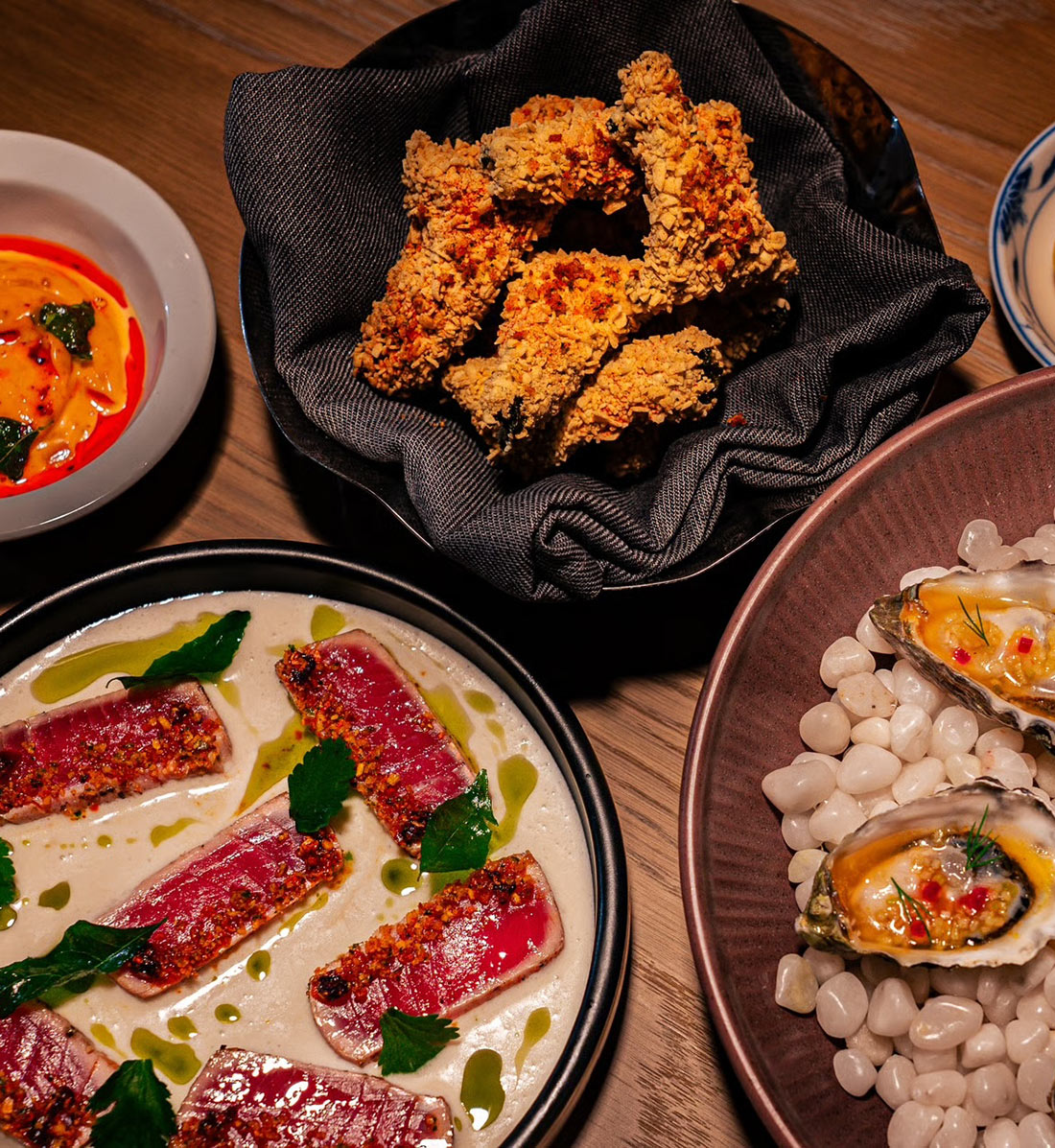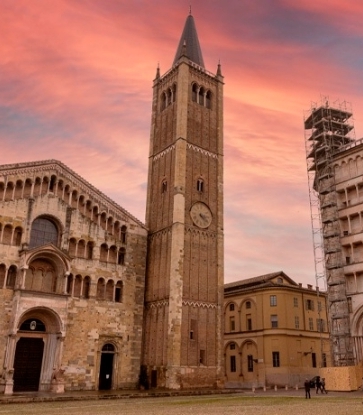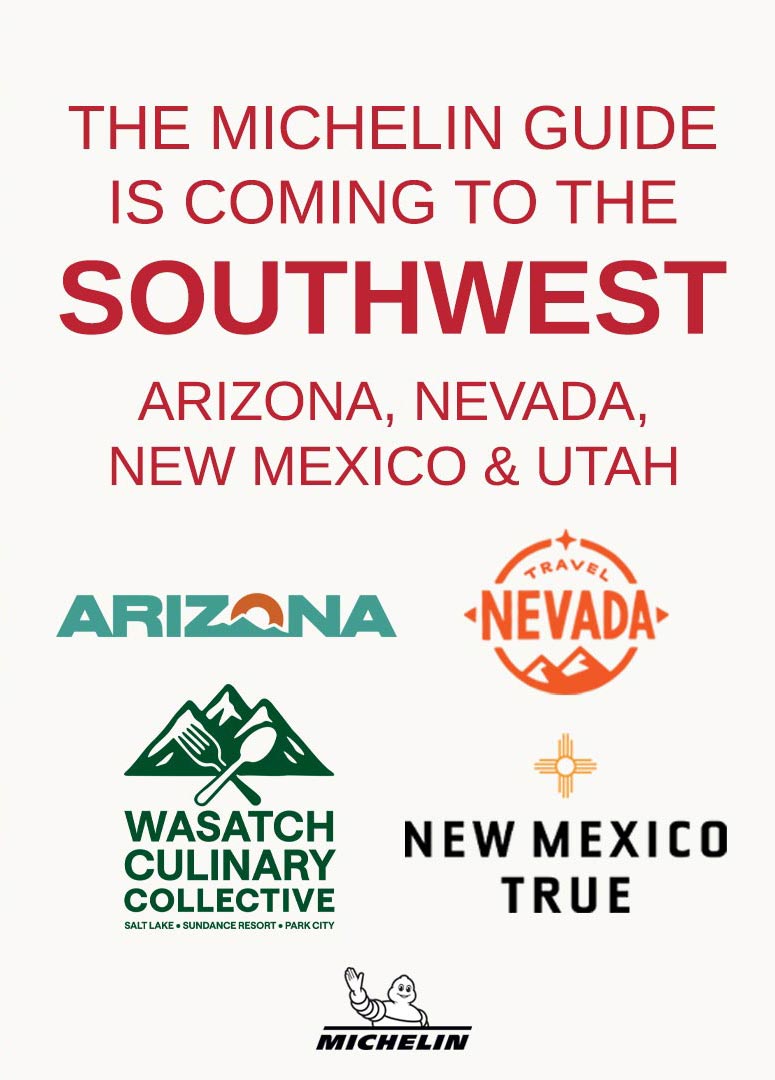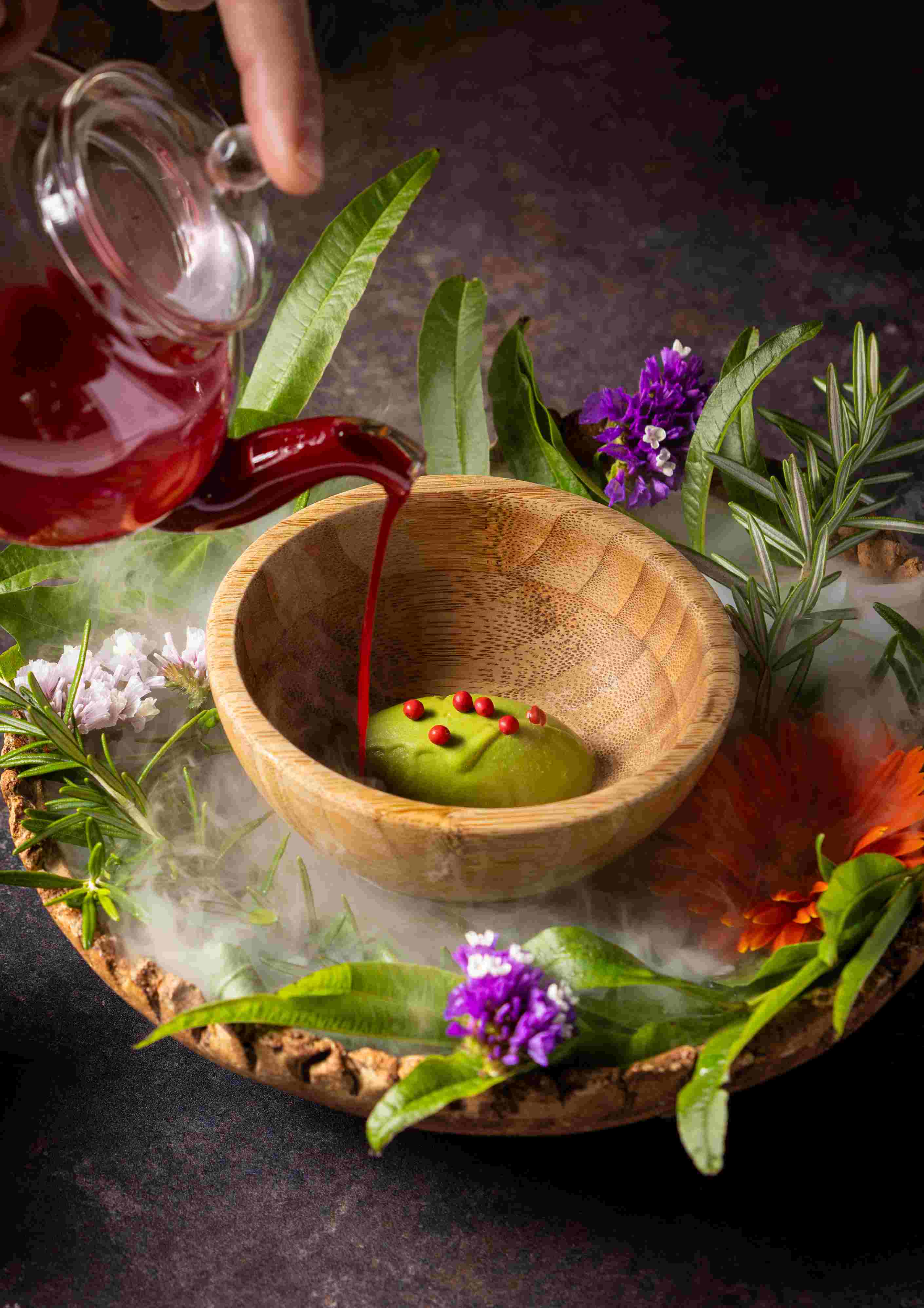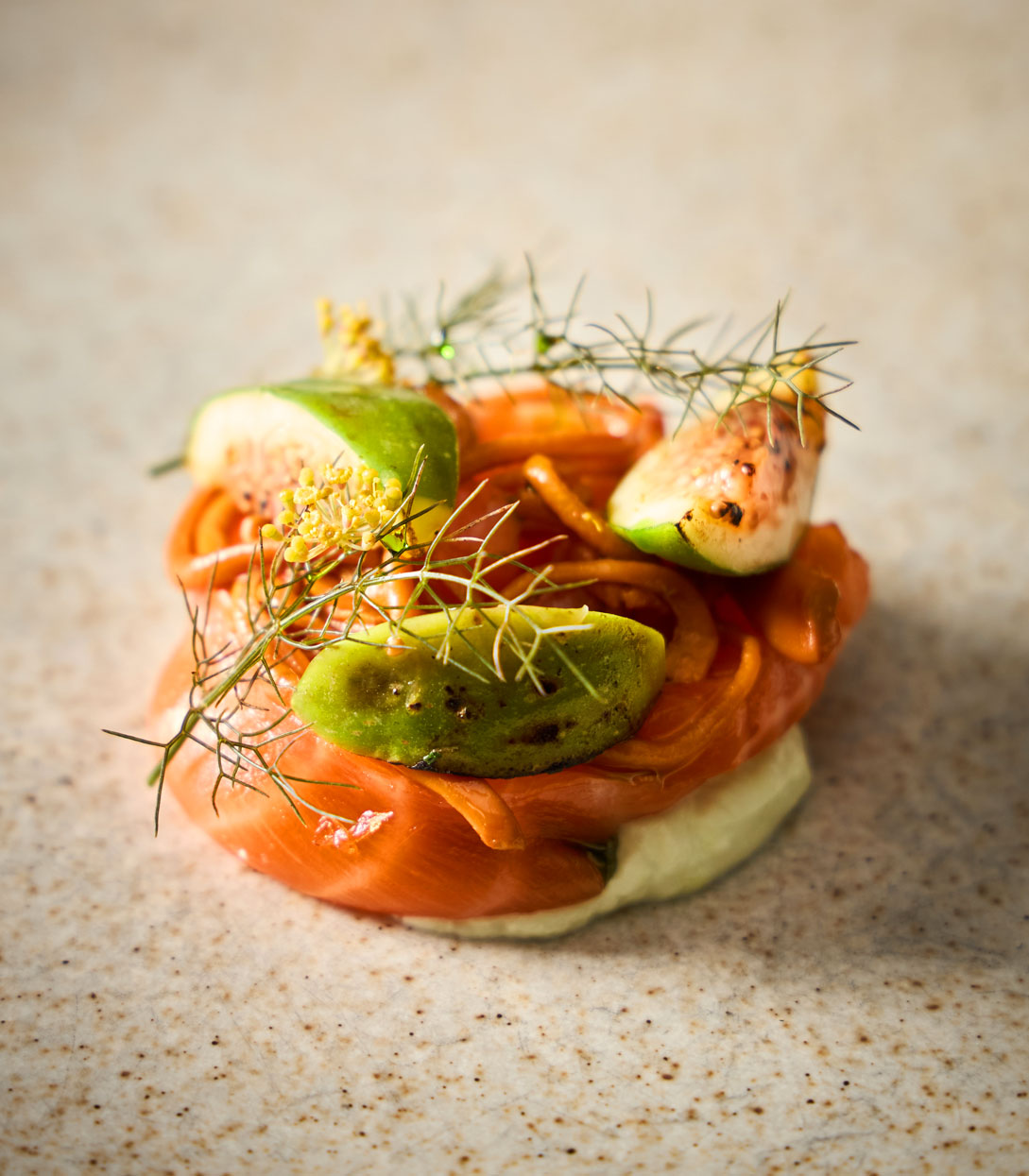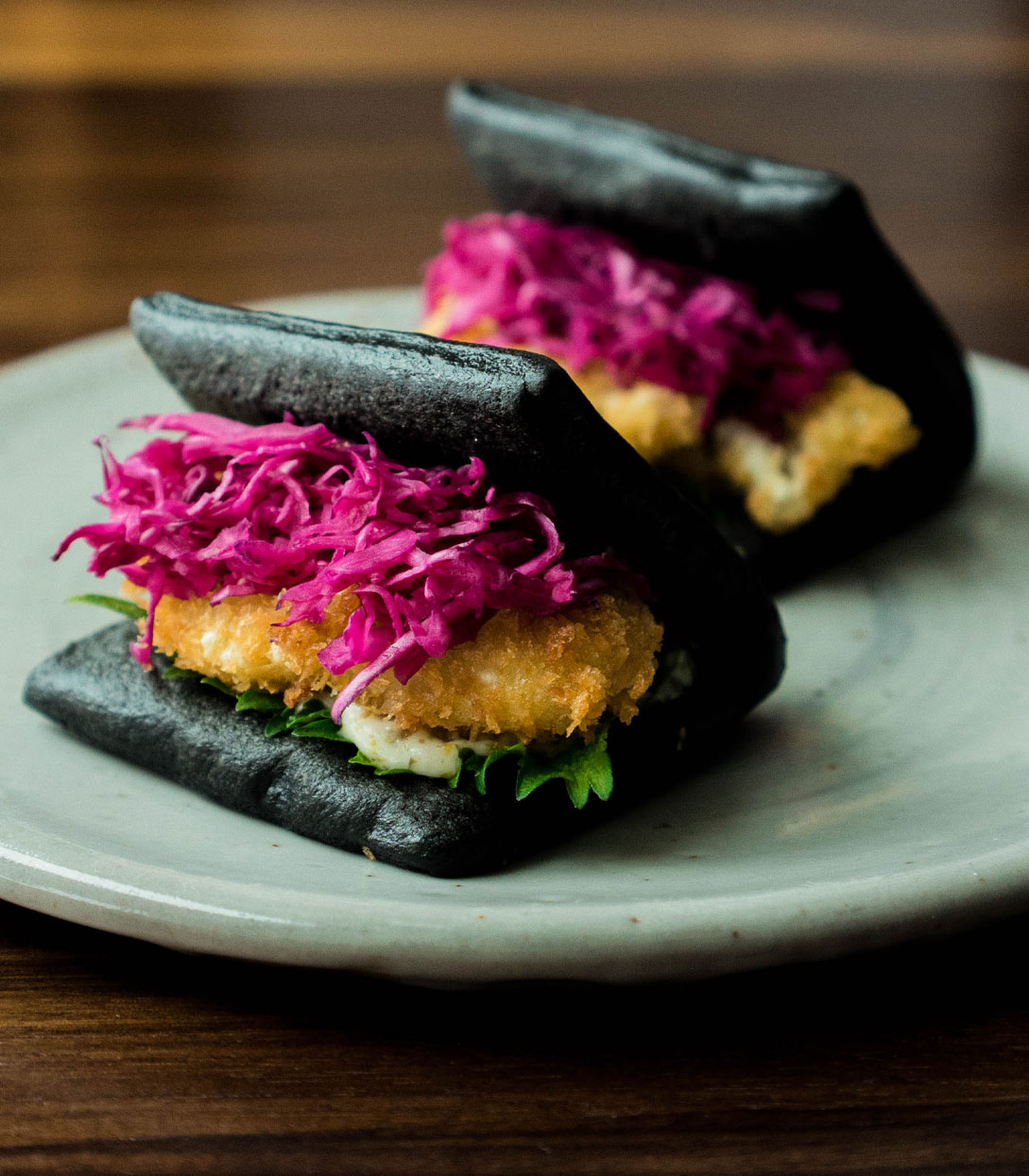Besides In-N-Out (see our Inspectors favorite burger spots from MICHELIN Guide in California here), wine country, and Hollywood, California also leads the way in sustainable gastronomy. In fact, the Golden State just awarded Green Stars to four additional restaurants. But sustainability means something different to each restaurant. Some choose to give new life to leftovers, while others focus on supporting local suppliers. And then there’s chefs Peter Hemsley of One Star Aphotic, and Michael Cimarusti of Two Star Providence; recent Green Star recipients that are committed to the preservation of the ocean and its inhabitants. Because for these chefs, their relationship with the ocean goes beyond the plate.
Aphotic, chef/owner Peter Hemsley
Derived from the Greek prefix meaning "without light," Aphotic references the deepest parts of the ocean that receive little to no light. That concept of “bringing light”, combined with chef/owner Peter Hemsley’s desire to focus on traceability and transparency as a restaurant, is what led to the inception of this One Star seafood restaurant. Below we chat with Hemsley about his favorite dish, his passion for the seas, and what motivates him.

Providence, chef/co-owner Michael Cimarusti
Learning how to fish as a child from his grandfather, the ocean is more than just a source of fun times and seafood for chef/co-owner Michael Cimarusti. It’s where he finds peace amidst the chaos of dinner service but moreso his duty as a fisherman. Below, Cimarusti dives into the zero-waste, bean-to-dessert chocolate program at Providence and how he turned his Melrose Avenue hotspot into a beacon of sustainable fishing.

What prompted the idea of your restaurant? Who came up with the name?
Aphotic mirrored the mystery inherent to the discovery of the fishermen we would be working with, but also the kinds of fish that we would be targeting as an “alternative” fish concept. We still had conventional things, like the pelagics (tuna, swordfish, etc), and part of the discovery was finding that transparency for them. But, there was also the other category. Through my travels and many conversations with fisherman, I discovered underutilized fish like the Pacific longnose skate, Pricklebacks, and the giant Pacific octopus; fish that did not usually make it to the market. In many other ways, Aphotic, as a name, was somewhat poetic - it’s a conversation about “bringing to light” underutilized or uncommon fish that are currently not abundant in markets. It also matched my stylistic preferences as the design lead of my restaurant: it’s dark interior accents, the dim lighting, and subtle (and sometimes not so subtle) oceanic references, throughout the space.
— Peter Hemsley
We were always going to be a seafood restaurant. I spent most of my life as a kid fishing. When I was a kid, my grandpa and I always used to go to this little town in Rhode Island called Galilee, which is this beautiful little fishing village. It's not a big metropolitan area by any means, it’s just a tiny little village right on the coast of Rhode Island. Pretty much every business there is either a little seafood restaurant or seafood shack. It’s a fishing port. To me, Galilee is what I picture when I think of what a little fishing village in New England looks like. That was kind of what I was leaning towards calling the restaurant at the beginning, but my wife, Christina - who is a partner in the business as well - brought up the idea that there’s a lot of mention of Galilee in the Bible, and that it might not be the greatest idea for a restaurant name. She was actually the one that suggested Providence, and not only because it's a city in Rhode Island, but also because of all the other connotations in the word and all the other meanings of the word. I just thought it was brilliant and so we went with it.
— Michael Cimarusti
Describe your relationship with the ocean, how did that start?
Over the years, I find that my relationship with the ocean goes beyond the plate. In my free time I take my dog on long runs on Ocean Beach, or at Fort Funston, or in the Presidio park. Nearly 40 now, I dream of surfing - a real mid-life crisis distraction - and find myself in Santa Cruz on some of my off Mondays, wading through near shores at side-glance view with the more practiced locals, trying not to get into too much trouble; a genuinely real kook, or shark bait, as the colloquial language runs. But, this obsession is real. Wallace J. Nichols, a marine biologist that I follow, and author of the Blue Mind, equates the effect of the ocean on our mind to that of a positively reinforcing drug. The Pacific, in my mind, is one of life’s great natural remedies. It is a drug; a genuinely healing one.
— Peter Hemsley
If I could, I would fish every day. I’m always thinking about fishing. Even when I’m at work, I’m checking the fish counts. No matter how long I’m on this planet, it’s something that I’ll always be doing. I will always thank my grandfather for instilling that love and wonderment in me. The feeling I got when I first fell in love with fishing, that doesn’t go away - it doesn’t change. I’ve seen some of the most remarkable things I’ve ever seen in my life while on fishing boats. Whether it’s a giant pod of porpoises, massive blue whales, or bald eagles coming down to take the fish right off the water ten feet in front of you. The things I've seen on the water, they’re some of the most stunning things that you’ll ever see anywhere in the world. I just feel at home when I'm on a boat. I can get on a boat and sleep like a baby. The sound of the engine, the rocking of the boat, it’s such a peaceful place to me. For me, being on the water is one of the happiest places in the world, no matter where it is.
— Michael Cimarusti
What does sustainability mean to you and how does ocean conservation relate to your restaurants?
I prefer sticking to “traceable” and “transparent” as our guiding lights. The line in the sand for us is seafood, sourced directly from fishermen that we know. Our seafood at Aphotic is sourced from local waters (so less energy miles in its delivery to our space), but also supporting the livelihood of a small and dying industry of commercial and artisanal fishermen. We also try to use all we can from the fish that we bring in, from grinding the bones for a house fish sauce (which we give away to all visiting guests in the dining room), to our fish charcuterie program of using up trim and odds and ends.
Traceability and transparency is all engaging, and I put in a lot of time outside of the restaurant in orchestrating the logistics for our program—so much so that I often wonder whether this activity is a sustainable model for myself?
— Peter Hemsley
Our journey towards sustainability started when I became a member of the Blue Ribbon Task Force at the Monterey Bay Aquarium, which is made up of chefs around the country that gather at the aquarium once a year to talk about the issues surrounding sustainability. Now, our sustainability initiatives encompasses so much more. We have the garden upstairs, we compost, we try to recycle gray water, we keep bees so that we have honey and they can pollinate the garden, and we also have a zero waste bean-to-dessert chocolate program from our pastry chef Mac Daniel Dimla, and a zero-waste cocktail program from our bar director Kim Stodel.
The zero-waste chocolate tea came from Mac wanting to find a use for all the leftover husks we'd have from the cacao beans. Any leftover husks gets turned into a syrup that's served with the tea. So it ends up being a deliciously flavored drink that smells like hot chocolate but it’s got the lightness of a tea. And the Zero Waste cocktail program really just came from Kim poking around in the kitchen and finding elements of certain vegetables to incorporate into his cocktail program. There’s all sorts of crazy drinks that he’s come up with just using organic waste from the kitchen.
I'm a fisherman, I've been a fisherman ever since I was a young kid. My grandfather kind of instilled in me a love for the ocean. And I feel like we have a "duty" here at the restaurant to try and find the most sustainable ingredients that we can. Everybody knows we're at an inflection point right now - we're either doing things to contribute to its longevity and health, or we're doing things to the detriment of the planet. And I think we all have a responsibility to be in the former category.
— Michael Cimarusti
What's the biggest challenge in being sustainable?
We try to use the whole fish. In practice, that means that we have to get very creative and experimental with things like fish offal, bones (as cocktail picks and skewers, fish skin as chips, fish scales—both candied and fried with spices, trim, and heads and bones for garum (fish sauce).
Another thing is education and training for people to act in a better way, materials and systems that make it economically more affordable for people to make decisions for the betterment of the environment, and incentives (financially) for people to act in a more environmentally conscious way.
— Peter Hemsley
I’d say the menu. We only want to work with wild finfish and sustainable ingredients, so we have to change the menu all the time. If something is unavailable for one week, we have to make a change. We’re also very much tied to the produce at farmers markets. These ingredients all have that one moment where they’re really perfect, and that's when we want to serve them. There wouldn’t be a menu without those ingredients.
— Michael Cimarusti
What can others (restaurants / individuals) do to be more environmentally conscious and respectful of their meals and the environment?
It would probably already be a huge leg up in the environmental battle if there were national, albeit international requirements to compost organic food. Maybe we start there?
Save the water...drink more wine? That’s a joke. The real answer is “one” thing is not enough. People need to be attacking this issue on a global scale, as if their lives depended on it.
— Peter Hemsley
It’s honestly really weird. In my 30 years or so of being in this business, I’ve seen so many fish that used to be prevalent on menus just completely disappear. The American Red Snapper, swordfish, and striped bass are perfect examples of this. Swordfish are on the way back, but only because very strict quotas were placed on it. The same thing happened for the striped bass on the East Coast—there was almost a complete moratorium on fishing [them] in the 80’s because the population had collapsed. Things are getting better. Pay attention to science and use the best information available at your disposal to make good decisions. Just know what you're buying and know what you should be buying.
— Michael Cimarusti
What do you view as the future of sustainability in gastronomy?
Synthetic food and manufactured sensations.
It is already the case that high-profile chefs, like José Andres and Dominque Crenn, are implementing lab grown chicken and salmon in their restaurants. The future for food in high-end restaurants is farming and science. A less depressing version of the future would be chefs teaming up to preserve traditions, and hold the wild, rare, luxurious, and hard to produce foods of the world in reverence.
— Peter Hemsley
I think that the idea of the word sustainability now means a lot more than just like the footprints you leave on the planet, especially in the restaurant industry. Now, the idea extends to the workforce, from our cooks in the kitchen to our servers in the front of the house. How do we make this the best place for people to work? What can we do to keep the workforce as happy as they possibly can be? We have several employees that have been with us ever since we opened those doors 18 years ago, so for us, the future of sustainability is much more than just making sure our menu and the ingredients are sustainable. It’s about keeping our business sustainable and our staff happy, growing, and motivated.
— Michael Cimarusti
What is your favorite dish from the menu?
I like the spot prawn Mortadella. I came up with this as a means to use up odds and ends from this very expensive local delicacy. I simply substituted prawn meat for pork in a traditional recipe - and voila! Heavenly bologna. On the plated version we marry it with spot prawn roe, brioche croutons, cumin, cayenne pepper, lime zest, and citrus marigold. More heavenly bologna!
— Peter Hemsley
Right now it’s probably the Alaskan halibut dish. It’s this small and beautiful halibut, which is usually not the norm. Alaskan halibut can get up to 500 pounds, but I like to work with fish that are between 12-18 pounds. We hang them in a Dry Ager for three or four days, filet and brine them in a salt solution, coat them with beautiful corn flour, fennel pollen, and a little Espelette pepper, and then we quickly sear the halibut on both sides, and serve it with a clam bouillon made from Washington State clams and Romano beans from Harry’s Berries. That’s what we’re serving right now and that is probably my favorite on the menu.
— Michael Cimarusti
Besides your restaurant, what is your favorite seafood dish? Where do you get it?
Every Thursday, I drive north to Tomales Bay to pick up our week’s worth of oysters at the Marin Oyster Company in Marshal. On the way back down to the city, I stop by a popular fish restaurant called Hook Fish Co., and get the fish and chips with a beer. Here’s my trick - I go off hours because it’s usually overrun at lunchtime or weekends - and a proper fish and chips is best when it’s 30 seconds old. It’s my little moment of bliss and quiet respite, a moment to reflect on the beauty and ephemeral nature of food, before going back into the grind.
— Peter Hemsley
We have another restaurant up the street called Connie and Ted's, which is named after my grandfather that taught me how to fish, and his wife. We make very simple New England style seafood, and a couple of my favorite things are the hot lobster roll and fried Ipswich clams. The way we do our fried clams at Connie and Ted’s is exactly the way they do it up in New England. It’s one of those foods that’s really nostalgic for me—I just love them.
— Michael Cimarusti
What did earning your MICHELIN Star(s) and Green Stars mean to you?
We've put everything into this concept, and receiving recognition from MICHELIN was validation for our efforts—something that we carry with pride. But, we are on to the next challenge, and looking forward to showcasing what is to come at Aphotic, with increasingly honed service standards, more creativity on the plate, and a larger roster of partners in our traceability mission.
— Peter Hemsley
It means a lot. I’ve learned so much about ingredients, techniques, and everything else at MICHELIN Starred restaurants all over the world, but the thought that one day I’d have a restaurant with Two Stars was just something that I never even thought was possible.
Adding a Green Star is a validation of the work and resources that chef Tristan Aitchison, Donato Poto, Cristina Echiverri, myself, and the team here at Providence have put in over the years to make Providence a more sustainable restaurant in every sense of the word.
When you’re my age and have been doing this for as long as I’ve been, the MICHELIN Guide means everything, it carries a lot of weight. Even now, when I travel to Japan for example and visit a MICHELIN Starred restaurant and they also know that you’re a MICHELIN Starred restaurant—there’s a certain fraternity to it. There’s a level of understanding and acceptance, which I think is a very important part of being in the guide, and why I’m so proud to be a part of it.
— Michael Cimarusti
What goal do you you hope to accomplish with your restaurant?
The goal with Aphotic is to create a seafood restaurant prioritizing relationships with partners for optimal traceability and transparency, with a mission to deliver an exceptional seafood experience to our guests. We want people who dine with us to know where their fish comes from. Part of our mission, after having learned so much over the last two years in building the program, is to educate our consumers on their visits to the restaurant, and also, hopefully, to inspire other restaurants to be more demanding about where their seafood comes from too.
— Peter Hemsley
The goal is to continue to grow and evolve. Myself and my partners have always felt our best work is in front of us. So I feel like there are just better things to come. You’ve got to have something to push for, and if you don’t, I don’t know why you get up in the morning.
— Michael Cimarusti








